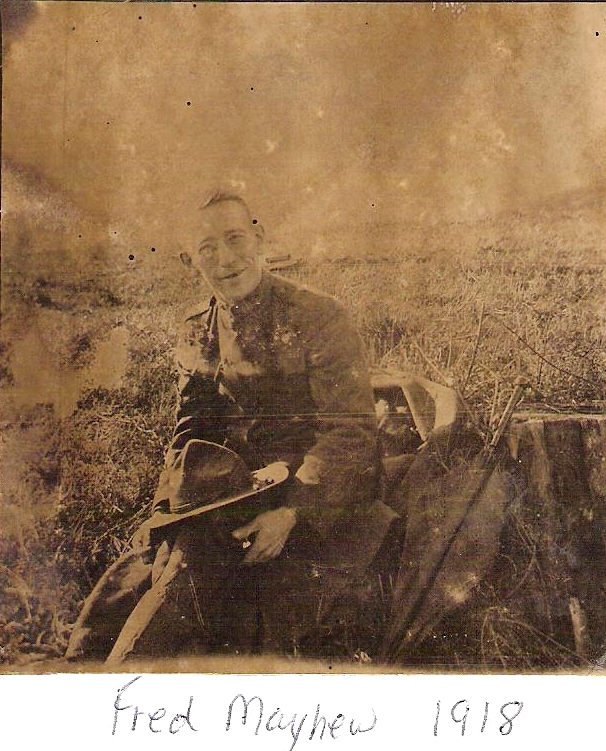o What: “Straight-Grained Soldiers” — the story of the World War I Spruce Production Division.
o Where: Pearson Air Museum,
1115 E. Fifth St.
o When:10 a.m.-5 p.m. Wednesday through Saturday (free admission).
o Information:National Park Service, exhibit on Vancouver’s spruce mill
http://1.usa.gov/16R6AyA
When our World War I allies needed a steady flow of new aircraft in 1917, Vancouver became the key to that supply stream.
The United States wasn’t building warplanes here. Actually, our European allies didn’t want us building combat aircraft at all. But they sure wanted our spruce: It was the wood of choice for French and British aircraft builders.
It led to a wartime logging and milling effort that stretched along the Northwest from Coos Bay to Bellingham. The focus was a spruce cut-up plant — reputed to be the world’s largest — at Vancouver Barracks. A million board feet of factory-ready spruce rolled out of Vancouver every day during its peak.
The workers who made it happen are being remembered in a new exhibit at Pearson Air Museum, “Straight-Grained Soldiers.” It uses artifacts, images, documents, videos and interpretive panels to tell the story of the Spruce Production Division.
“Because they didn’t go overseas, Spruce Production Division soldiers often faced accusations of cowardice, but they played a tremendous role in making sure that early military aviators — whether they were American, British, or French — were equipped with planes to fight the war,” said Meagan Huff, a museum technician with the National Park Service.
For one family, the exhibit provides a salute to their own “spruce wood soldier” — Fred Mayhew.
Terry Wulff, of Oklahoma City, Okla., flew into Vancouver five weeks ago with some items that reflected his grandfather’s service in the Spruce Production Division. Wulff had come across them almost by accident a couple of years ago.
After a fruitless 20-year search for old photos from his mother’s side of the family, he was visiting his uncle in Portland. The uncle asked if Wulff could go down to the basement and keep an eye on a plumber who was working on a water heater.
“There were a couple of chests of drawers in the basement,” Wulff said, and he started wondering if there might be some old family photos in there.
“I got eight grocery bags full of pictures. I had to buy another suitcase to bring all the photos home” to Oklahoma City, Wulff said.
Wulff offered some of the material to the Fort Vancouver National Historic Site, and it arrived just in time for some of it to be included in the exhibit.
The display is the newest exhibit at Pearson Air Museum under the National Park Service. The museum switched management on Feb. 6 as conflicts came to a head between the Park Service, which owns the land and building, and the Fort Vancouver National Trust, which had operated the museum for the city of Vancouver for several years.
U.S. Rep. Jaime Herrera Beutler, R-Camas, has introduced a bill to transfer museum ownership to the city of Vancouver. The bill, which passed out of committee, is awaiting a hearing on the House floor.
In addition to the exhibit, the Park Service has released a new publication on the Spruce Production Division. Industrial historian Ward Tonsfeldt wrote how the Spruce Production Division helped solve two very serious problems on two continents.
The first problem was in the skies above Europe, where combatants were fighting for aerial superiority in WWI. Midway through the war, Tonsfeldt wrote, the average life of a wooden-and-fabric pursuit plane was only 80 hours of flight time. (The life expectancy of a combat pilot was a little better, by the way: 93 hours.)
There also was a technology race going on, as each side tried to launch newer and deadlier warplanes. That’s one reason our allies didn’t want the U.S. to manufacture warplanes: Building them here was just too inefficient.
For our allies, the wings of victory were made of spruce. It was straight-grained, hence the exhibit’s title of “Straight-Grained Soldiers.” Pound for pound, it’s almost three times stronger than steel, Tonsfeldt noted. And it held up better than other materials in aerial combat: The wood didn’t shatter when a bullet went through it.
The Pacific Northwest was blessed with plenty of spruce, but turning out enough to turn the tide of aerial war was another problem. The woods of Washington and Oregon were hotbeds of labor unrest a century ago.
Army Col. Brice P. Disque approached that problem through a government-sponsored union, the Loyal Legion of Loggers and Lumbermen.
Workers participated because it gave them some of the workplace breakthroughs they had been demanding, like an eight-hour day and medical care. Mill owners signed up because it meant a steady workforce.
It was another strategy that brought soldiers like Fred Mayhew into the effort. To get even more workers in the logging camps and mills, Disque organized the Spruce Production Division in November 1917; it eventually became part of the Army Signal Corps.
Stationing troops in the mills and logging camps also helped ensure an orderly workforce, Tonsfeldt noted in his history of the Spruce Division.
The final processing was done at the Vancouver cut-up facility. At about 100,000 square feet, it was the size of two side-by-side football fields. The site is where Fort Vancouver and Pearson Air Museum now stand.
It’s an appropriate setting to honor his grandfather’s contribution to the war effort, Wulff said. It’s material that he couldn’t display properly, Wulff said.
And the younger members of his own family don’t seem interested in the WWI generation, Wulff said. “They have no idea who those people are.”
Tom Vogt: 360-735-4558; http://www.twitter.com/col_history; tom.vogt@columbian.com




